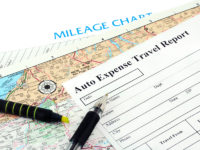Automation is the most reliable way to clean up an organisation’s expense management but nine in 10 SMEs in Australia still use paper receipts, a study found.
Relying on paper receipts to manage expenses costs businesses money due to the time it takes to process them, and the potential for errors, duplicate claims and lost receipts. Yet a recent survey shows 91% of Australians are still submitting paper receipts and spreadsheets to managers and a mere 23% of Australians are using online tools when it comes to submitting expenses.*
It seems that businesses still don’t understand the value of automated expense systems. Australian SMEs could save up to $44,000 per year just by reducing the amount of duplicate claims that are made. Couple this with the number of exceptions or policy violations, and other non-compliant expenses, and Australian SMBs stand to realise considerable savings by automating their systems.**
Automation is the most reliable way to clean up an organisation’s expense management. When expenses are managed via spreadsheets or paper-based forms, mistakes are bound to be made, including duplications. By contrast, organisations that implement automated, integrated, end-to-end travel and expense management systems can reap the benefits of time savings, increased visibility and better reporting.
Over three quarters (77%) of employees have unproductive moments due to lack of adequate tools.*** And according to Forrester Research, 80% of firms currently rely on T&E data entered manually this is time consuming and can cause extreme loss of productivity.****
There are six key benefits of automated travel and expense management systems:
- A strong platform means one user experience, one set of reconciled data, and one source of truth for analytics and reporting
- Automated systems can be configured to align with company rules and policies, including preferred hotels, airlines and maximum spending limits according to the type of travel
- The system can be configured with data that is specific to the organisation, such as employee IDs, project codes and customer accounts
- There is potential to connect with customer relationship management (CRM) systems to understand the cost-of-sale per customer
- They offer a real-time view of how each project is performing according to budget
- They deliver a better understanding of where employees are, and how to maximise employee satisfaction and productivity
Supporting employees with better expense management tools can make a significant impact when it comes to efficiency and productivity, both for employees who need to claim expenses, and for the finance department and managers who need to process and approve expenses.*****
* Concur (2016). Omnibus Study on expenses. Ipsos
** Concur research analysed expense data from 50 companies with fewer than 500 employees. The total expense spend reviewed amounted to $86 million; the median spend per company was $1.1 million and the average number of employees was 157.
*** CFO Insights on Success, Concur, 2014
**** Forrester Research, State of Travel and Expense Management, 2014
***** CFO Insights on Success, Concur, 2014
Matt Goss, ANZ Managing Director, Concur















